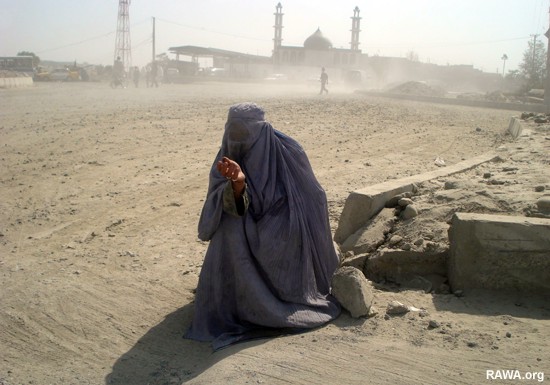IRIN News, March 10, 2008
AFGHANISTAN: Food shortages cause grass eating, displacement
"Our children will die if we do not receive urgent assistance," said a local elder, Atiqullah, on the phone.
GHAZNI: Food shortages in Ajristan District of Ghazni Province, central Afghanistan, have forced some families to eat dried grass in order to survive, local people and the district administrator told IRIN.
"Many families in Ajristan are eating different kinds of dried grass and vegetables like alfalfa, which are normally given to cattle, due to food shortages and extreme poverty," said Raz Mohammad Hemat, the district administrator.

There are staggering: 60,000 children in Afghanistan are addicted to drugs, and another 100,000 are disabled and otherwise severely affected physically due to prolonged conflicts in the country.
Alfalfa (Medicago sativa) is a flowering plant cultivated for forage. In the UK it is known as lucerne. The plant grows to a height of up to one metre, and has a deep root system sometimes spanning 4.5 metres. This makes it very resilient, especially to drought.
Ajristan District - with an estimated population of 100,000, predominately Pashtuns, and lying about 200km south of Ghazni city - saw heavy snowfall in the past three months, which blocked roads, affected staple food prices on local markets, and killed hundreds of animals.
Plea for help
A spokesman for the governor of Ghazni Province, Abdullah Nashir, confirmed widespread food shortages in Ajristan and Nawa districts but gave assurances that relief items would be delivered to the affected communities as soon as the roads re-open.
Many families in Ajristan are eating different kinds of dried grass and vegetables like alfalfa, which are normally given to cattle, due to food shortages and extreme poverty.
The consumption of dried alfalfa and grass has raised concern about diarrhoea and sight disorders among the local population.
Continued consumption of dried grass and alfalfa - as the only diet - can worsen a person’s, particularly children’s, susceptibility to diarrhoea and in the long-run can lead to malnourishment, according to Abdullah Fahim, a spokesman for the Ministry of Public Health.
"Patients do not receive adequate treatment in the only health clinic in the district and there is also a lack of medication in local drug stores," said one resident.
However, officials in Ghazni's public health department said adequate medical supplies sufficient for six months were dispatched to Ajristan District before winter and more will be delivered quickly if needed.
"We have not received any reports about any [disease] outbreaks in Ajristan," said Ziagul Asfandi, the provincial director of public health. He acknowledged that acute food-insecurity could increase children's vulnerability to communicable diseases.
Displaced people in Badakhshan
In the northeastern province of Badakhshan hundreds of families have reportedly been displaced due to food-insecurity in several areas, provincial officials reported.
Preliminary assessments conducted by the Afghan Red Crescent Society (ARCS) indicated that up to 1,000 families had left their homes in Argo and Kishm districts, some of whom had moved to neighbouring Takhaar and Kunduz provinces in search of food.
"There are risks that more families will abandon their houses," warned Saeed Nasir, the provincial head of ARCS.
Roads to several districts in Badakhshan Province - which has a rugged terrain and poor road infrastructure - have remained blocked due to heavy snow and avalanches.
WFP aid programme
According to the World Food Programme (WFP), increases of up to 70 percent in staple food prices, road blockages and other winter-related problems have pushed millions of Afghans into "high risk food-insecurity".
In response, the Afghan government and the UN launched a joint appeal for about US$80 million on 24 January to provide an emergency "safety net" for 2.55 million vulnerable Afghans across the country.
WFP said donors had responded generously to the appeal and an emergency food assistance programme had begun in Kabul, which would soon be extended to other provinces, including Ghazni and Badakhshan.
"Food aid is ready for up to 85,000 people in Ghazni Province and delivery will begin as soon as we receive the lists of beneficiaries from the Ministry of Martyrs and Disabled," Ebadullah Ebadi, a spokesman for WFP, told IRIN in Kabul.
Relief items are also available in WFP stocks in Faizabad, the provincial capital of Badakhshan, which will be distributed to beneficiaries when roads re-open, Ebadi said.
WFP plans to distribute 89,000 tonnes of emergency food aid between now and mid-year, in addition to the 180,000 tonnes that it intends to distribute in 2008 for nearly 3.7 million Afghans affected by conflict, natural disasters and food-insecurity.
Characters Count: 5910

 (
(